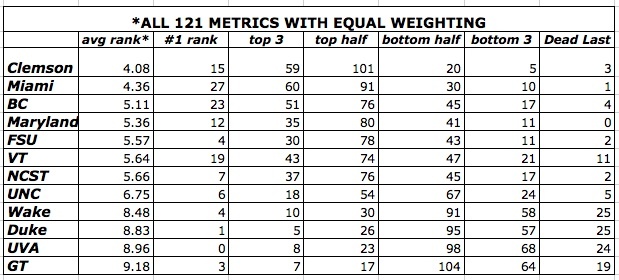The Complexities Of Building A Robot To Make Nikes

Table of Contents
The Mechanical Marvels: Engineering Challenges
Automating the production of a Nike shoe presents a significant engineering challenge. The process requires robots with exceptional dexterity, precision, and adaptability to handle a variety of materials and intricate assembly steps.
Precision and Dexterity: The Need for Fine Motor Skills
Robots need incredibly precise movements to handle delicate materials like stitching and applying adhesives. Current robotic arms, while powerful, often lack the fine motor skills of a human hand.
- Challenges: Tasks like threading a needle, precisely placing the Nike swoosh logo, or creating consistent stitching patterns are incredibly difficult for current robotic technology. The subtle pressure and manipulation required are beyond the capabilities of most existing industrial robots.
- Solutions: Addressing this requires significant advancements. Advanced sensors providing haptic feedback, AI-powered control systems capable of learning complex movements through machine learning, and potentially soft robotics—robots using flexible materials—could provide the necessary dexterity. Further research into bio-inspired robotics, mimicking the human hand's capabilities, is crucial.
Material Handling: Adapting to Diverse Materials
Nike shoes utilize a variety of materials: leather, fabric, rubber, foam, and various synthetic materials. Each material presents unique challenges for robotic handling.
- Challenges: Robots need to adapt their grip strength and manipulation techniques based on the material's texture, weight, and thickness. Damaging delicate materials during the manufacturing process is a significant risk. Identifying and sorting materials accurately is also crucial.
- Solutions: Adaptive gripping mechanisms, capable of adjusting their grip based on sensed material properties, are essential. Vision systems using computer vision and AI for material identification and quality control are equally important. Sophisticated force control algorithms are necessary to prevent damage to sensitive materials during manipulation.
Assembly Process Optimization: Creating a Seamless Robotic Workflow
Integrating the various robotic processes into a seamless and efficient assembly line is a complex undertaking.
- Challenges: Synchronizing multiple robots working simultaneously, ensuring efficient material flow, and minimizing downtime due to robot malfunction or material jams are all critical for productivity. Programming the complex interactions between different robots is a significant hurdle.
- Solutions: Advanced robotics software that manages the entire workflow and coordinates multiple robots is essential. Detailed simulations of the assembly process are needed to identify and resolve potential bottlenecks before implementation. Real-time monitoring and adaptive control systems can help optimize the workflow dynamically in response to unexpected events.
Economic and Business Considerations: The Financial Landscape of Robotic Shoe Manufacturing
Implementing robotic shoe manufacturing requires careful consideration of economic factors. The high initial investment, return on investment (ROI) projections, and job displacement concerns are major considerations.
Initial Investment Costs: A Significant Upfront Expense
Building and implementing a robotic shoe manufacturing system necessitates a substantial upfront investment.
- Challenges: The cost of advanced robots, sophisticated software, system integration, and necessary infrastructure can be prohibitive for many companies, particularly smaller manufacturers.
- Solutions: Government subsidies, grants, and tax incentives can help mitigate costs. Collaborative robots (cobots), which work alongside human workers, are a more affordable option that allows for a phased implementation.
Return on Investment (ROI): Balancing Costs and Benefits
Determining the return on investment requires a careful analysis of several factors.
- Challenges: Accurately predicting ROI can be challenging due to the complexity of robotic systems, potential unforeseen maintenance issues, and the difficulty in quantifying the impact of increased efficiency and reduced defects.
- Solutions: Detailed cost-benefit analyses are crucial. Simulations using digital twins can help predict performance and identify potential problems. Pilot programs testing the system on a smaller scale can provide valuable data before full-scale implementation.
Job Displacement Concerns: Addressing the Social Impact
Automation has the potential to displace workers in the footwear manufacturing industry.
- Challenges: Addressing worker displacement and retraining needs is a crucial ethical and social responsibility.
- Solutions: Reskilling and upskilling initiatives to prepare workers for new roles in robotics maintenance, programming, and other related fields are vital. Focusing on higher-value tasks for human workers, such as design, quality control, and advanced manufacturing processes, can create new opportunities.
Ethical and Social Implications: Beyond the Bottom Line
Ethical and social considerations extend beyond economic factors. Quality control, environmental impact, and the responsible use of technology are all critical aspects.
Quality Control and Product Consistency: Ensuring High Standards
Maintaining consistent quality with robotic manufacturing requires robust quality control processes.
- Challenges: Robots must be programmed to detect defects automatically, and the systems need to ensure the robots' output meets the stringent quality standards expected from Nike.
- Solutions: Advanced vision systems with AI-powered defect detection are crucial. Rigorous testing protocols, both during development and production, are essential to maintain quality.
Environmental Impact: Minimizing the Ecological Footprint
The environmental impact of robotic manufacturing must be assessed and minimized.
- Challenges: The energy consumption of robots, the generation of waste from materials and components, and the lifecycle impact of robots and their components all need to be considered.
- Solutions: Energy-efficient robots, using sustainable materials in robot construction and shoe production, and implementing responsible disposal and recycling programs for robot components are vital for minimizing the environmental footprint.
Conclusion: The Future of Robotic Nike Manufacturing
Building a robot to make Nikes, while a fascinating prospect, is riddled with complexities. From the intricate challenges of robotic dexterity and material handling to the significant economic and ethical considerations, the path to fully automated shoe production is long and challenging. Overcoming these hurdles requires innovation in robotics, careful planning, and a responsible approach to job displacement and environmental impact. However, the potential rewards—increased efficiency, consistency, and potentially lower costs—make the pursuit of robotic Nike manufacturing a significant area of ongoing research and development. Let's continue to explore the potential of robotics in the manufacturing sector and the ongoing quest to perfect the art of building a robot to make Nikes. The journey to a fully automated Nike production line is a marathon, not a sprint, but the potential benefits are worth the effort.

Featured Posts
-
 Stock Market Pain Investors Push Prices Higher Despite Risks
Apr 22, 2025
Stock Market Pain Investors Push Prices Higher Despite Risks
Apr 22, 2025 -
 Antitrust Scrutiny Intensifies Is A Google Breakup Inevitable
Apr 22, 2025
Antitrust Scrutiny Intensifies Is A Google Breakup Inevitable
Apr 22, 2025 -
 Analyzing The Pan Nordic Defense Force Strengths And Weaknesses
Apr 22, 2025
Analyzing The Pan Nordic Defense Force Strengths And Weaknesses
Apr 22, 2025 -
 The Supreme Court Obamacare And Trump How The Ruling Could Impact Rfk Jr
Apr 22, 2025
The Supreme Court Obamacare And Trump How The Ruling Could Impact Rfk Jr
Apr 22, 2025 -
 Over The Counter Birth Control Implications For Reproductive Healthcare After Roe V Wade
Apr 22, 2025
Over The Counter Birth Control Implications For Reproductive Healthcare After Roe V Wade
Apr 22, 2025
